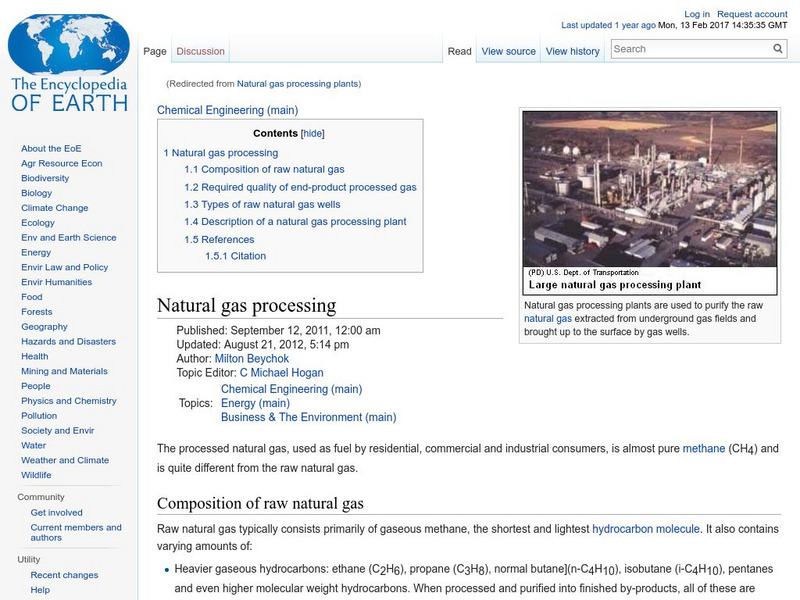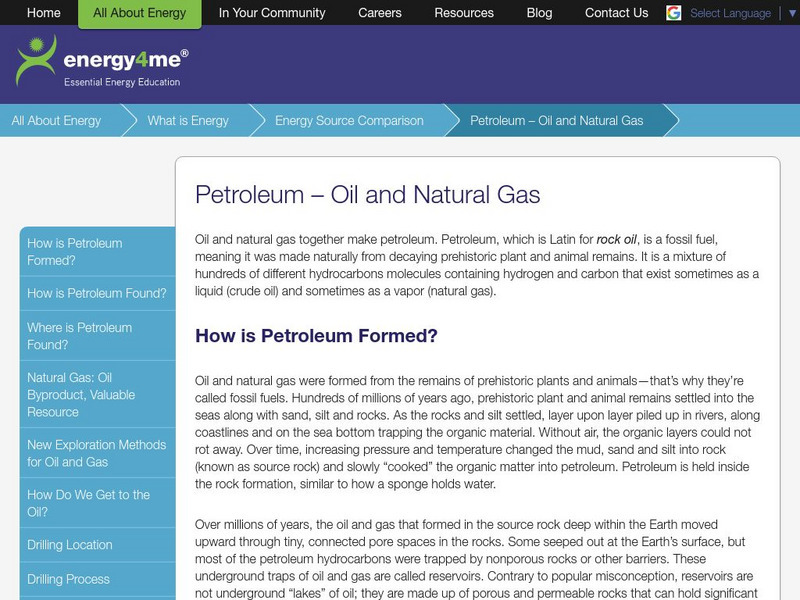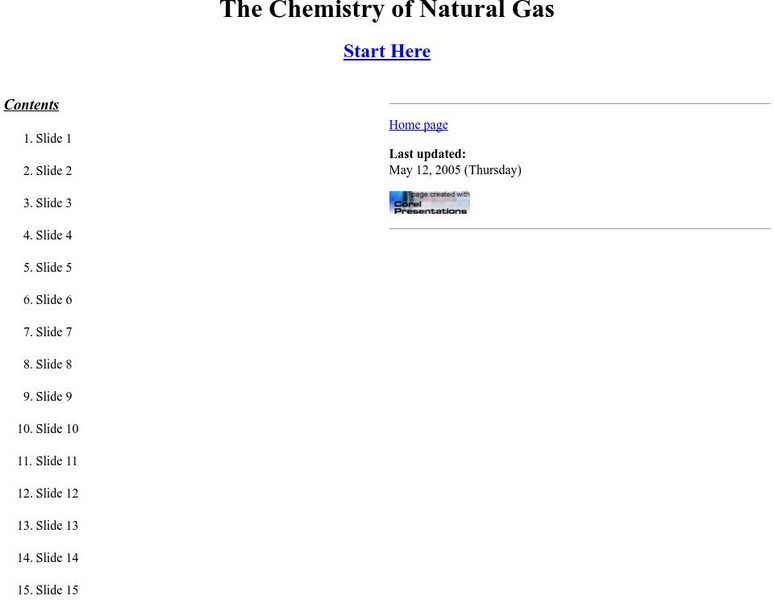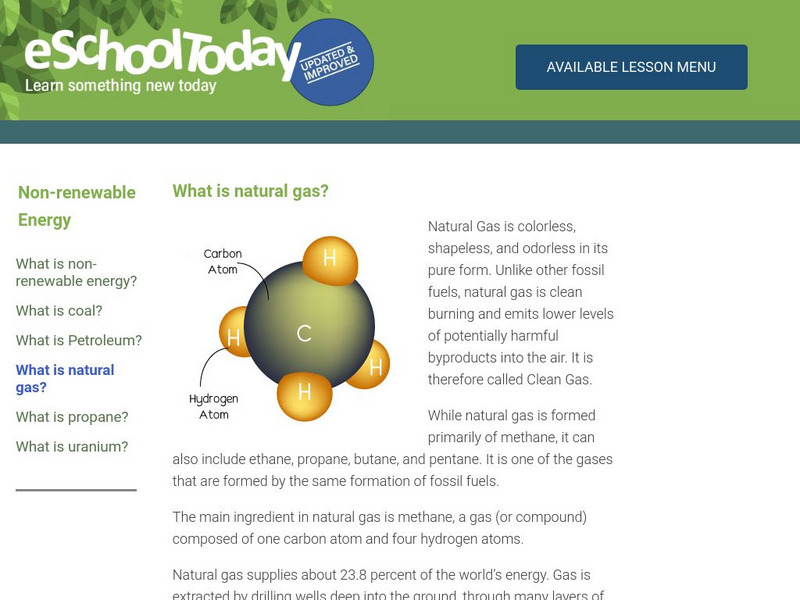Curated OER
US Energy Geography
The maps display the statistics for energy consumption and power production, state by state. They are tremendous visual aids for your natural resources unit. Consider having your class compare energy consumption versus production, or...
Center for Learning in Action
Water—Changing States (Part 1)
Here is part one of a two-part lesson in which scholars investigate the changing states of water—liquid, solid, and gas. With grand conversation and up to three demonstrations, learners make predictions about what they think will happen...
Beyond Benign
Daphnia Bioassay LD50
De-icing materials may have a harmful effect on our environment; have your class perform an experiment to test the nature of these effects. Scholars monitor the survival rate of a sample of daphnia as the concentration of a de-icing...
Jefferson Lab
The Periodic Table of Elements
A study of the periodic table of elements doesn't have to be elementary! Deepen understanding of the building blocks of chemistry with an interactive periodic table. At first sight, the table looks like a standard reference page, but a...
Re Energy
Build Your Own Biogas Generator
What is biogas and how is it made? After examining background information about the sources of biogas and biogas generators, class members follow the provided information and build a biogas generator that can be used in the...
National Institute of Open Schooling
Chemical Thermodynamics
All chemical reactions require energy. To explore thermodynamics, classes read and discuss its laws, exothermic and endothermic reactions, enthalpy in many forms, calculate enthalpy problems, and use Hess' Law to calculate enthalpy of a...
National Institute of Open Schooling
Solid State
Crystal comes from a Greek word meaning ice. Activity eight in a series of 36 has class members analyzing amorphous and crystalline solids and further classifying them based on their forces. They then explore solids, learning about unit...
It's About Time
Monitoring Active Volcanoes
The fastest growing volcano in recorded history grew more than 150 meters in less than a week and to more than 424 meters in less than a decade. How do we safely monitor active volcanoes? Young scientists design an...
National Institute of Open Schooling
The Liquid State
Due to surface tension, dew — a liquid, is spherical in shape. Learners explore the properties of liquids in activity seven in this series of 36. Beginning with its basic properties such as boiling point and moving through to surface...
Ballet Austin
The History of Modern Dance
The evolution of modern dance, and the dance history of many of the key figures in the development of this uniquely American form, are the focus of a 13-page packet that includes photos of revolutionaries.
Encyclopedia of Earth
Encyclopedia of Earth: Natural Gas: Liquefied Natural Gas
Article discussing what liquefied natural gas is, the liquefaction process, its history, how it is transported and stored, and safety considerations. (Published: September 13, 2011)
Encyclopedia of Earth
Encyclopedia of Earth: Chemical Engineering: Natural Gas Processing
Explains the composition of natural gas and what is required to make it market-ready, types of reservoirs, and what happens in a natural gas processing plant. Includes a diagram showing the whole process. (Published: September 12, 2011)
Encyclopedia of Earth
Encyclopedia of Earth: Natural Gas
Explains what natural gas is, how it is formed, its composition, measurement terminology, how companies locate and extract it, processing, how it is transported and stored, uses, and safety considerations. (Published: September 20, 2011)
Other
American Gas Association: Learn About Natural Gas
Learn about natural gas including topics such as statistics on natural gas usage in the United States and little-known facts about this energy source.
Energy for Sustainable Development
Esd Bulgaria: Kids & Energy: Natural Gas
Learn how natural gas forms, how scientists find it beneath the Earth's surface, and how it is produced, stored, and transported.
American Geosciences Institute
American Geosciences Institute: Natural Gas: Background
A resource page on natural gas. Learn what natural gas is, how it used, how it is formed, how it is drilled, processed, and transported, and advantages and disadvantages.
Energy4Me
Energy4me: Petroleum Oil and Natural Gas
Learn the history of the world's use of the fossil fuels oil and natural gas for usable energy.
Upper Canada District School Board
Tom Stretton's Chemistry Pages: The Chemistry of Natural Gas
Through an online slide-show format, learn about the history and chemistry behind the resource, natural gas.
US Energy Information Administration
U.s. Eia Energy Kids: Timelines: Natural Gas
A timeline of key milestones in the use of natural gas as a source of engergy.
eSchool Today
E School Today: Nonrenewable Energy: Natural Gas
Get the basics on nonrenewable energy. Learn about its uses and conservation.
Other
Institute for Energy Research: Fossil Fuels
A detailed article providing information about fossil fuel resources in the United States and how they impact economic growth. Several reports, which can be downloaded, examine energy policies, the potential for economic growth, and...
Geographic
Russia Natural Resource
Russia is rich in natural resources which include oil, natural gas, iron ore, manganese, chromium, nickel, platinum, titanium, copper, tin, lead, tungsten, diamonds, phosphates, gold, and timber.
Wikimedia
Wikipedia: Alaska Gas Pipeline
Discusses the proposed development and possible routes of a pipeline to transport natural gas from Prudhoe Bay in Alaska.
Other popular searches
- Coal Petroleum Natural Gas
- Natural Gas Experiments
- Oil vs. Natural Gas
- Natural Gas Energy
- Natural Gas Safety World
- Natural Gas and Oxygen
- Natural Gas Activities
- Natural Gas Resources
- Oil vs Natural Gas
- Liquefied Natural Gas
- Consumption of Natural Gas
- Natural Gas Drilling






















